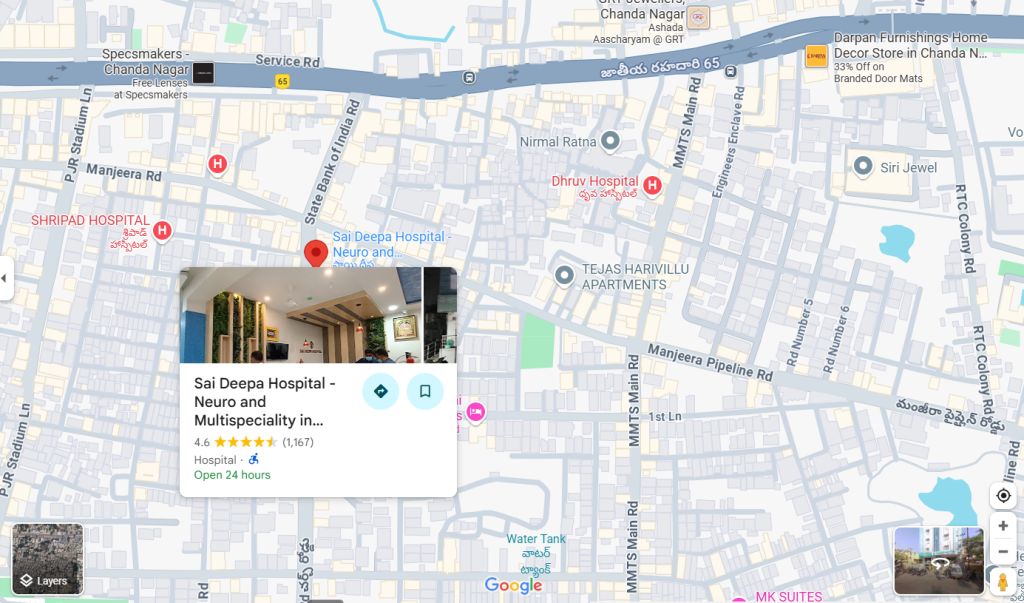Best Hernia Treatment in Hyderabad
- Home
- Best Hernia Treatment in Hyderabad
Best Hernia Treatment in Hyderabad
A hernia might seem small at first, but ignoring it can lead to serious complications. Understanding what a hernia is, how it develops, and when to seek treatment is the first step toward better health. Whether you’re experiencing discomfort or just curious, this blog will help you recognize the signs early and take action.
1L+
Happy Customers
25+
Qualified Doctors
50
Rooms
5000+
Successful Surgeries
Free
Consultation
24/7 Ambulance
Facility
Insurance
Claim Support
What Is a Hernia?
A hernia occurs when an internal organ or tissue pushes through a weak spot in the surrounding muscle or connective tissue. This results in a noticeable bulge, often in the abdomen or groin, and it may cause discomfort or pain, especially when bending, lifting, or coughing.

Dr. Sasidhara Roa A
MBBS, MS
5000+ Successful Surgeries
11+ Years of experience
Dr. Sasidhara Rao A. is an experienced General and Laparoscopic Surgeon at Sree Sai Deepa Hospitals, Chandanagar, with over 11 years of expertise and 5000+ successful surgeries. He specializes in laparoscopic, laser, and microscopic surgeries, treating conditions like piles, fissures, varicose veins, and gallbladder issues.
Doctor’s Fellowships:
Fellowship - International Society of Coloproctology
Fellowship in Intimate Health
Fellowship in Diagnostic Endoscopy
What Are the Different Types of Hernias?
There are several types of hernias, each based on its location:
- Inguinal hernia: Most common in men; occurs in the groin area.
- Femoral hernia: More common in women; also in the upper thigh or groin.
- Umbilical hernia: Appears near the belly button, often seen in infants.
- Hiatal hernia: Happens when the upper stomach pushes into the chest cavity.
- Incisional hernia: Develops at the site of a previous surgical incision.
Is a Hernia Common or Serious?
Hernias are quite common, affecting millions worldwide. While some hernias are mild and manageable, others can become serious. If left untreated, a hernia may become trapped (incarcerated) or cut off from the blood supply (strangulated), leading to life-threatening conditions.
What Are the Symptoms of a Hernia?
Symptoms may vary depending on the type of hernia, but some common signs include:
- A visible bulge in the abdomen or groin
- Pain or discomfort, especially when lifting or bending
- A feeling of heaviness or pressure
- Burning or aching sensation near the bulge
- Nausea or vomiting (in severe cases)
Get your surgery cost
Where Does a Hernia Commonly Develop?
Hernias typically appear in areas with weaker muscle walls. These common locations include:
- Groin (inguinal and femoral)
- Belly button (umbilical)
- Upper stomach (hiatal)
- Scar area from previous surgery (incisional)
How Does a Hernia Look and Feel?
You might see a soft bulge or swelling, especially when standing or straining. It may flatten or disappear when lying down.
Touching it may cause discomfort or tenderness, and the area could feel warm if there’s inflammation.
What Are the Signs of a Hernia?
The earliest sign is usually a small lump that gets larger over time. Other signs include:
- Pain that worsens with activity
- Swelling or discomfort that comes and goes
- Bloating or digestive issues (especially in hiatal hernias)
Is There Any Difference in Hernia Symptoms Between Men and Women?
Yes, symptoms may differ slightly:
- Men typically experience inguinal hernias, with a noticeable groin bulge and pain while lifting.
- Women may develop femoral hernias, which are deeper and harder to detect early. They may cause pelvic pain and digestive symptoms.
What Are the Main Causes of a Hernia?
Hernias often result from a combination of muscle weakness and strain. Contributing factors include:
- Heavy lifting without proper support
- Chronic coughing or sneezing
- Constipation or straining during bowel movements
- Obesity or excess weight
- Previous surgeries
- Pregnancy (increases abdominal pressure)
How Is a Hernia Diagnosed?
Doctors typically diagnose hernias through:
- Physical exam: Feeling for a bulge while you stand or cough.
- Imaging tests: Ultrasound, CT scan, or MRI to confirm the type and size.
- Endoscopy: Especially for hiatal hernias, to look at the stomach and esophagus.
Accreditations
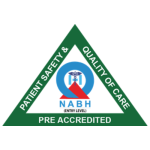
Saideepaneurocare Hospitals is NABH certified, a mark of excellence in patient safety and care. We follow stringent healthcare protocols and maintain world-class hygiene standards.

We are ISO 9001 certified, ensuring the highest standards in quality management and patient care. This certification reflects our commitment to efficient processes and continuous improvement in healthcare services.
Treatment Options for Hernia
Depending on the type and severity, treatment options include:
- Lifestyle changes: For small or hiatal hernias, changes like weight loss or avoiding heavy lifting might help.
- Medications: Especially for acid reflux in hiatal hernias.
- Surgery: Most hernias require surgical repair, either through open surgery or minimally invasive laparoscopic surgery.
Modern procedures, especially laparoscopic hernia surgery, offer faster recovery, minimal scarring, and fewer complications.
What is the Procedure for Removing a Hernia?
Hernia removal is typically done through surgery, which is the only permanent way to fix a hernia. Depending on the type, size, and severity of the hernia, as well as the patient’s age, health, and preferences, surgeons use one of three main techniques:
1. Open Hernia Surgery (Conventional Method)
This is the traditional and most commonly used method.
How it’s done:
- The surgeon makes a single incision (cut) near the hernia site.
- The bulging tissue or organ is gently pushed back into its correct place.
- If the abdominal wall is weak or has a hole, it is repaired with stitches, and often a synthetic mesh is placed to strengthen the area and reduce the risk of recurrence.
- The incision is then closed with stitches or staples.
Best for:
- Large hernias
- Complicated or strangulated hernias
- Emergency cases
Recovery:
- Hospital stay: 1 to 2 days
- Return to light activities: 2–3 weeks
- Full recovery: 4–6 weeks
2. Laparoscopic Hernia Surgery (Keyhole Surgery)
This is a minimally invasive approach that uses small cuts and a camera.
How it’s done:
- 3 to 4 tiny incisions (each less than 1 cm) are made near the hernia site.
- A thin tube with a camera (laparoscope) is inserted to guide the surgeon.
- Small surgical tools are used to pull back the hernia and reinforce the abdominal wall with mesh from the inside.
- The cuts are then closed with a few stitches or surgical glue.
Best for:
- Recurrent hernias
- Bilateral (both sides) hernias
- Patients looking for quicker recovery and less pain
Recovery:
- Hospital stay: Usually same-day discharge or 24 hours
- Return to daily work: 1–2 weeks
- Full recovery: 3–4 weeks
3. Robotic Hernia Surgery (Advanced Keyhole Surgery)
This is a newer, precision-based laparoscopic surgery done using a robotic system.
How it’s done:
- Similar to laparoscopic surgery, but the surgeon controls robotic arms from a console.
- The robotic system provides 3D vision and fine control, allowing for precise mesh placement and stitching.
Best for:
- Complex or recurrent hernias
- Deep abdominal hernias
- Patients who prefer lower recurrence rates and minimal scarring
Recovery:
Similar to laparoscopic recovery (1–2 weeks)
What Happens If a Hernia Is Left Untreated?
Leaving a hernia untreated can lead to:
- Incarceration: The hernia gets stuck and cannot be pushed back in.
- Strangulation: The blood flow gets cut off, causing tissue death.
- Chronic pain and discomfort
- Digestive problems or bowel obstruction
These are serious risks that require immediate medical attention.
Sai Deepa Hospital - Neuro and Multispeciality
Plot no 387, Church road, Huda colony, Chanda Nagar, Hyderabad – 500050
Which is the Best Hospital to treat a Hernia in Hyderabad
If you’re looking for the best hospital to treat hernia in Hyderabad, Sree Sai Deepa Hospitals in Chandanagar stands out as a trusted choice. Known for its expert team of general and laparoscopic surgeons, the hospital specializes in advanced hernia treatments using both laparoscopic and laser techniques. With over 11 years of surgical excellence and 5000+ successful procedures, patients receive care that is precise, minimally invasive, and focused on faster recovery.
Conveniently located for residents in Chandanagar, Miyapur, and Kukatpally, Sree Sai Deepa Hospitals has become a preferred destination for safe, effective hernia treatment in Hyderabad.
Book a Consultation Today!
📍 Sai Deepa Hospitals, Chanda Nagar, Hyderabad
📞 Call or WhatsApp: +91-7093762716
🌐 www.saideepaneurocare.com
Patient Reviews

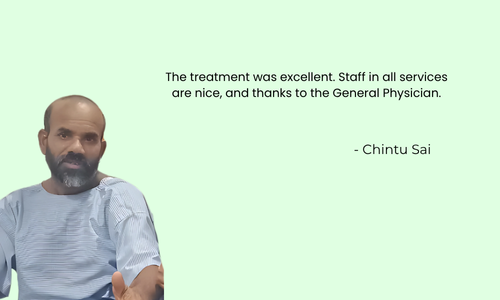
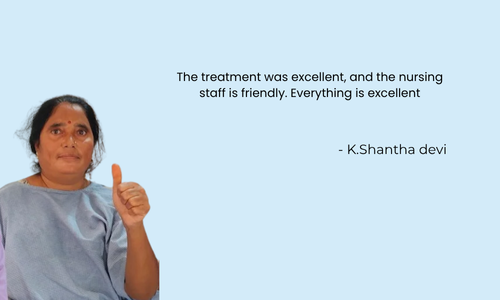
FAQ's on Hernia
1. Can a hernia heal on its own?
No, a hernia will not heal on its own. While symptoms may improve temporarily with rest or supportive garments, the bulge in the muscle or tissue does not close without surgery. Over time, hernias may grow larger or become painful, especially during physical activity or lifting.
2. What are the 5 warning signs of a hernia?
Here are five common warning signs:
- Visible bulge in the abdomen, groin, or near a previous surgical scar
- Pain or discomfort when coughing, lifting, or bending
- A feeling of heaviness or pressure in the abdomen
- Swelling or tenderness in the affected area
Nausea, vomiting, or inability to pass gas (possible signs of a strangulated hernia – seek emergency care)
3. Can I live a normal life with a hernia?
In early stages, many people manage mild hernias without surgery by avoiding triggers like heavy lifting or straining. However, this doesn’t mean the hernia is cured. Without treatment, it may enlarge or cause complications. To live a pain-free, normal life long-term, surgical repair is usually recommended.
4. What is the best treatment for a hernia?
The best and most reliable treatment is hernia surgery. Depending on your health and hernia type, your surgeon may recommend:
- Open surgery (traditional)
- Laparoscopic surgery (minimally invasive)
Robotic-assisted surgery (advanced precision)
All three methods aim to push the hernia back and reinforce the weak area, often using a mesh to prevent recurrence.
5. Is hernia surgery a major surgery?
Hernia surgery is typically considered minor to moderate, depending on the hernia’s complexity. Laparoscopic and robotic techniques allow for faster recovery and smaller scars, while open surgery may involve a longer recovery for larger or complicated hernias. Most patients go home the same day or after a short hospital stay.
6. How to check a hernia at home?
You can look for signs like:
- A bulge or swelling in your abdomen or groin that increases when you stand or strain
- Discomfort when lifting or bending
A feeling of pressure or a dragging sensation
However, a proper diagnosis should always be made by a doctor, often with a physical exam or imaging like an ultrasound.
7. How can I shrink my hernia naturally?
Unfortunately, hernias do not shrink or heal naturally. However, you can manage symptoms or prevent worsening by:
- Avoiding heavy lifting
- Losing excess weight
- Eating a high-fiber diet to prevent straining during bowel movements
Wearing a supportive hernia belt or truss (only under medical advice)
These steps may help reduce discomfort, but do not replace the need for surgery if the hernia is persistent or painful.
